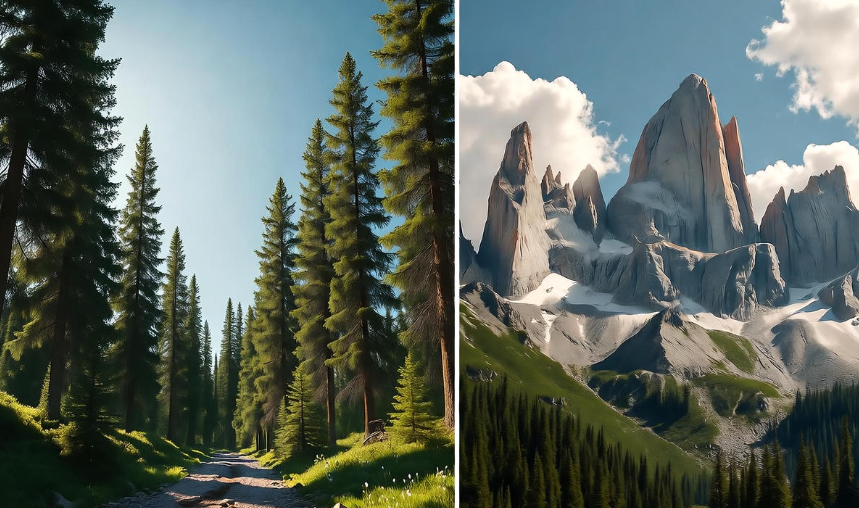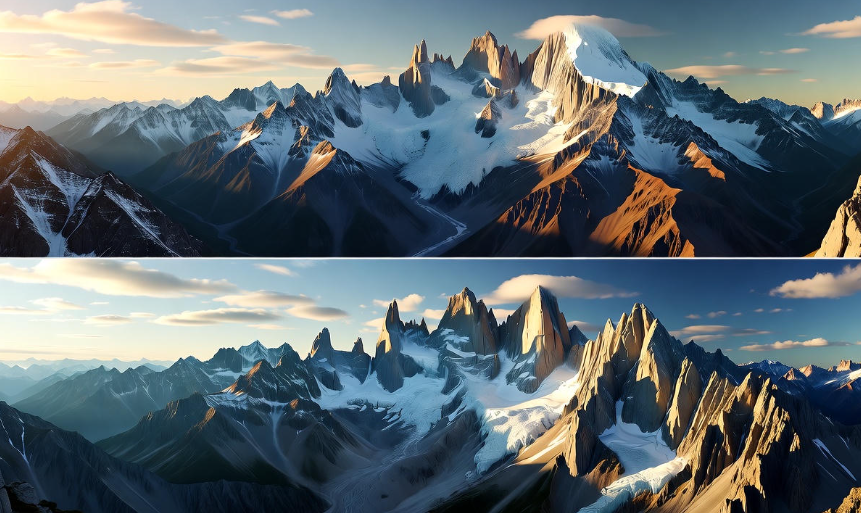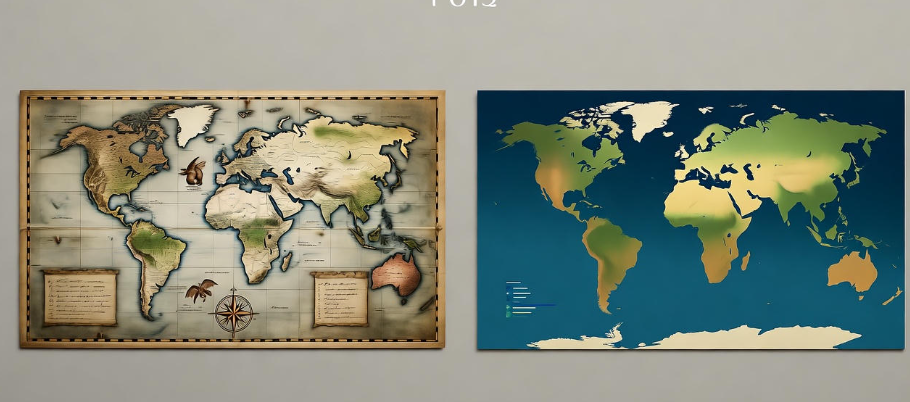Borders are often seen as lines on a map—something political, strict, and official. But some borders are more than just a line; they are stunning natural wonders that showcase the beauty of our planet . These natural borders have been formed by mountains, rivers, lakes, and forests over centuries, creating breathtaking scenery while separating nations. Let’s explore some of the most beautiful natural borders in the world.
1. The Rio Grande – United States and Mexico
The Rio Grande is not just a river; it is a lifeline that stretches over 1,800 miles. Flowing from Colorado in the United States to the Gulf of Mexico, it forms a natural border between Texas and Mexico. The river’s waters cut through canyons, deserts, and lush landscapes, providing dramatic views that change with the seasons. Along the banks, you can see diverse wildlife and colorful flora that make this border a visual treat. ️
2. The Alps – Switzerland, France, Italy, Austria
The Alps are a majestic mountain range that acts as a natural border for several European countries. Snow-capped peaks, deep valleys, and crystal-clear lakes make the Alps one of the most stunning natural boundaries. Hiking trails here offer panoramic views of cliffs, meadows, and quaint villages. The Alps are not only visually spectacular but also historically important, having protected cultures and shaped local traditions for centuries. ⛰️
3. The Danube River – Hungary and Slovakia
The Danube, Europe’s second-longest river, flows through ten countries, but its stretch between Hungary and Slovakia is particularly beautiful. The river’s serene waters reflect historic castles, ancient towns, and green hillsides. Boat rides along the Danube give you a chance to enjoy peaceful landscapes while witnessing how nature naturally marks a country’s edge.
4. Mount Roraima – Venezuela, Brazil, Guyana
Mount Roraima is a flat-topped mountain, called a “tepui,” sitting at the junction of Venezuela, Brazil, and Guyana. This ancient formation rises dramatically from the surrounding jungle, almost like a floating island in the clouds. Its cliffs, waterfalls, and unique flora and fauna make it one of the most extraordinary natural borders in the world. Many adventurers say it feels like another planet!
5. The Andes – Chile and Argentina
The Andes Mountains are the longest continental mountain range on Earth. Between Chile and Argentina, the Andes create a stunning barrier with snow-covered peaks, glacial lakes, and volcanic landscapes. The scenic roads, especially the ones near Patagonia, offer jaw-dropping views. The Andes don’t just separate nations—they connect cultures through shared history, hiking paths, and trade routes. ️
6. Lake Titicaca – Peru and Bolivia
Lake Titicaca, the highest navigable lake in the world, lies between Peru and Bolivia. Its deep blue waters, dotted with floating reed islands and surrounded by mountains, make it an awe-inspiring natural border. Local communities live along the lake, maintaining traditions that date back centuries. Sunsets here are magical, reflecting golden hues over the Andes and creating one of the world’s most serene border landscapes.
7. The Mekong River – Thailand and Laos
The Mekong River is a vital waterway in Southeast Asia, acting as a border between Thailand and Laos. Its waters weave through dense forests, limestone cliffs, and vibrant riverbanks. Traditional boats, local markets, and waterfalls along the Mekong make this border both picturesque and culturally rich. The river truly represents life, beauty, and division all at once.
8. The Carpathian Mountains – Romania and Ukraine
The Carpathians are lush, forested mountains forming a natural border between Romania and Ukraine. With thick forests, wildlife like bears and wolves, and medieval castles scattered around, the Carpathians are enchanting. Hikers often describe it as stepping into a fairytale, where borders disappear into misty valleys and dense greenery.
9. Niagara Falls – United States and Canada
Niagara Falls is one of the most famous natural borders in the world. Flowing between the U.S. and Canada, the waterfalls are a spectacle of nature’s power and beauty. Millions of tourists visit to witness the roaring waters, rainbows, and mist that blanket the border. Even at night, the falls are illuminated, making this natural border magical both day and night.
10. The Himalayas – India and Nepal
The Himalayas are a breathtaking border between India and Nepal. Towering peaks like Mount Everest dominate the skyline, while valleys below are home to vibrant villages and terraced fields. The mountains not only serve as a physical boundary but also as a spiritual symbol, inspiring cultures, religions, and adventures alike. ️
Comparison Table of Some Stunning Natural Borders
| Natural Border | Countries | Key Feature | Best Time to Visit |
|---|---|---|---|
| Rio Grande | USA & Mexico | Desert canyons, river | Spring & Fall |
| Alps | Switzerland, France, Italy, Austria | Snow peaks, hiking trails | Winter & Summer |
| Mount Roraima | Venezuela, Brazil, Guyana | Flat-topped mountain | Dry season (Dec-Apr) |
| Lake Titicaca | Peru & Bolivia | High-altitude lake | May-Oct |
| Niagara Falls | USA & Canada | Waterfalls, rainbows | Year-round |
Why Natural Borders Are Special
Unlike political borders marked by fences or walls, natural borders show the raw beauty of Earth. They shape ecosystems, protect cultures, and provide scenic spots for travel, photography, and adventure. Many of these borders are UNESCO World Heritage Sites or protected areas due to their ecological and cultural importance.

Tips for Visiting Natural Borders
-
Check travel rules: Some borders may require visas or special permits.
-
Respect nature: These areas are delicate ecosystems. Avoid littering.
-
Best time to visit: Research seasonal changes to see the landscapes at their most beautiful.
-
Local experiences: Engage with communities near borders—they often preserve ancient traditions.
FAQs About Natural Borders
Q1: Are all natural borders safe to visit?
Not always. Some regions may have political tensions or rough terrains. Always check travel advisories and local guidance.
Q2: Can wildlife cross these borders freely?
Yes! Animals don’t follow political lines, so many species move freely across borders, maintaining biodiversity.
Q3: Why do natural borders attract tourists?
They combine scenic beauty with cultural richness, offering activities like hiking, boating, photography, and cultural exploration.
Q4: Do natural borders affect climate?
Yes. Mountains, rivers, and lakes influence local climate patterns, rainfall, and wind, shaping the ecosystem of the surrounding regions.
Q5: Are natural borders always recognized officially?
Not always. Some natural features are informal borders, while others, like rivers or mountain ranges, are recognized legally.
Conclusion
Natural borders are more than just boundaries; they are artworks created by nature over millions of years. From the icy peaks of the Alps to the roaring waters of Niagara Falls, these borders remind us of Earth’s power, beauty, and diversity. Traveling to these places offers not just a chance to see stunning landscapes but also a deeper appreciation of how nature shapes the world.
Whether you’re an adventurer, photographer, or nature lover, exploring these natural borders is like stepping into another world—a world where boundaries exist in harmony with nature’s grandeur.




